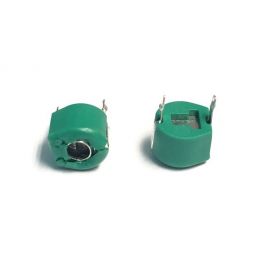djmiyta
Well-known member
I have a cheap amazon transistor tester and as far as I know it works just fine. When I throw a 2n5089 in the tester I get a readout that says
NPN 123=CBE
hFE = 430 Vf=680mv
and over here is the schematic symbol of the transistor
ICE0= .00mA
ICEs=.00mA
Now when I go to the Datasheet for 2n5089 I'm lost . Hfe is the only one I can find on the data sheet but I see it in a couple of places . For the above my best guess is Vf = forward Voltage (?) the next 2 ICE0 and ICEs I have no clue and more so whether the tester info is useful for building pedals. so that's what I'm asking is how or what to look for when comparing the tester to the data sheet
the data sheet shows
DC Current gain using different milliamps so how do know the tester is testing in the same manner do I have to do some conversion with math? I understand if I'm asking in a non sensible way and if it starts involving algebra to de cypher the above forget it cause basic math skills is what I got.(barely)
for the XTS Atomic OD does the hfe on the 2n5089 need to be any specific number (thats how I got going on this whole thread) the above is a typical readout of around 20 that I checked only a few old ones read hfe at 750-800 hfe which I thought was typical so I wonder if I got some shitty trannies cause I got about 50 of em.
Thanks to everybody here on this great forum for wasting their time reading about my lame issues and going further and answering them.
NPN 123=CBE
hFE = 430 Vf=680mv
and over here is the schematic symbol of the transistor
ICE0= .00mA
ICEs=.00mA
Now when I go to the Datasheet for 2n5089 I'm lost . Hfe is the only one I can find on the data sheet but I see it in a couple of places . For the above my best guess is Vf = forward Voltage (?) the next 2 ICE0 and ICEs I have no clue and more so whether the tester info is useful for building pedals. so that's what I'm asking is how or what to look for when comparing the tester to the data sheet
the data sheet shows
DC Current gain using different milliamps so how do know the tester is testing in the same manner do I have to do some conversion with math? I understand if I'm asking in a non sensible way and if it starts involving algebra to de cypher the above forget it cause basic math skills is what I got.(barely)
for the XTS Atomic OD does the hfe on the 2n5089 need to be any specific number (thats how I got going on this whole thread) the above is a typical readout of around 20 that I checked only a few old ones read hfe at 750-800 hfe which I thought was typical so I wonder if I got some shitty trannies cause I got about 50 of em.
Thanks to everybody here on this great forum for wasting their time reading about my lame issues and going further and answering them.
Last edited:




